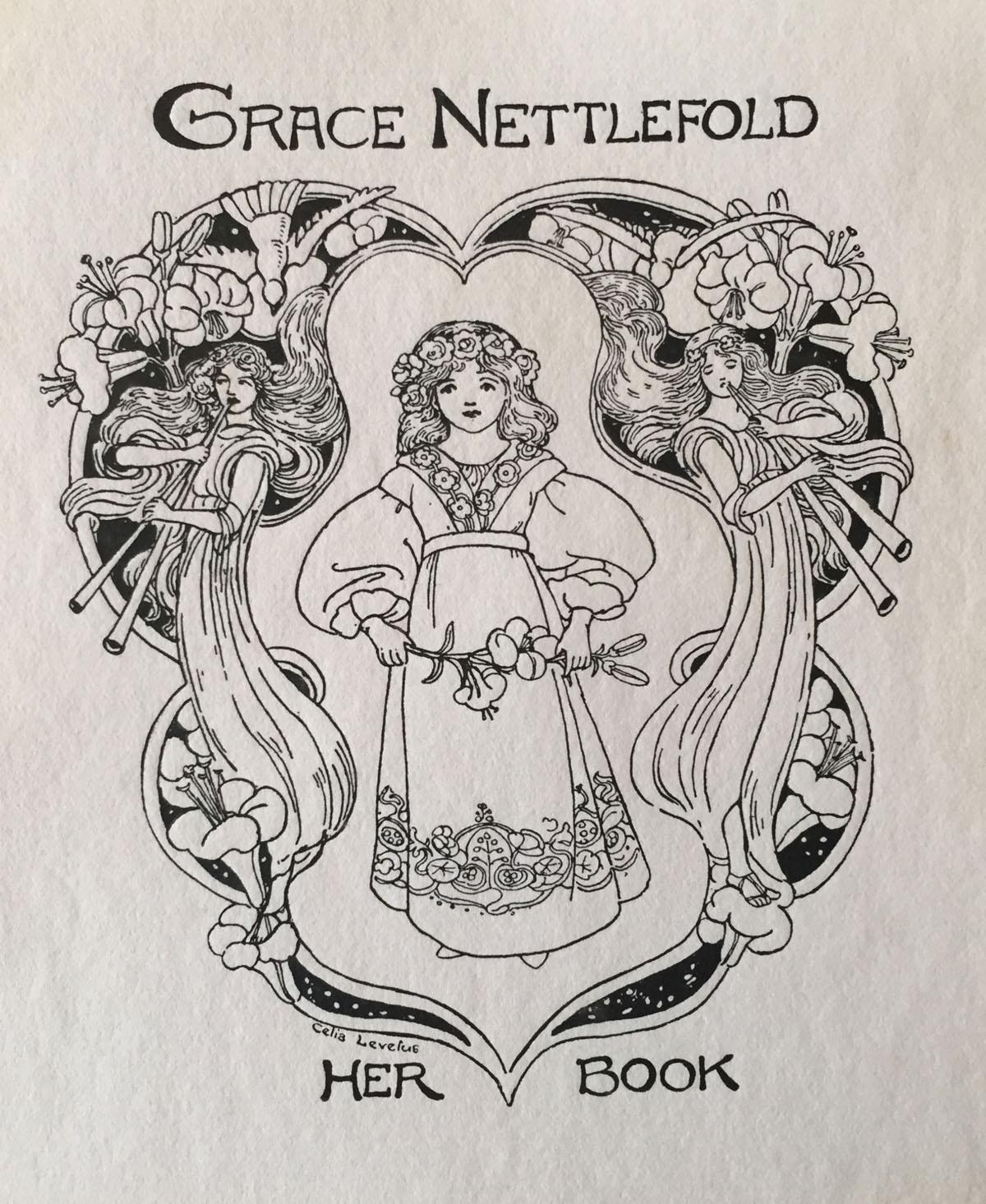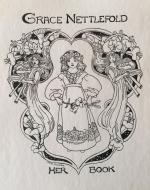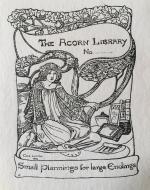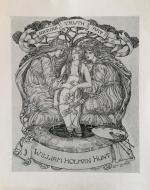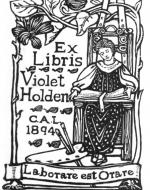Created by Rebecca Mitchell on Thu, 06/14/2018 - 06:36
Description:
The Birmingham School fostered the ‘hands-on’ approach. Designers were expected to undertake the physical creation of their own art, without recourse to the mechanised processes of modern industry. The School also espoused William Morris’s ideals of ‘the decoration of utilities’, according to which utilitarian objects should be made beautiful, and beautiful objects should be functional.
Bookplates have a practical function, and also answer Morris’s call to make the functional beautiful. Celia Levetus elevated the bookplate to an art form in itself.
Levetus was recognised by influential designer and critic Walter Crane as a leading artist of Birmingham, earning recognition amongst men. The School’s female population was particularly successful, earning a number of the School’s prizes. Levetus was encouraged by the headmaster to give up her studies to pursue art professionally. She may have heeded Morris’ advice to refine her ‘essentials as an artist’ before pursuing a career ‘by which to earn your bread’. Bookplates offered her commercial success. The repeated theme of women reading establishes a female presence in a male-dominated intellectual and commercial world and reflects on contemporary debates around women reading.
Caption by Hannah Geear
Copyright:
Associated Place(s)
Timeline of Events Associated with Bookplates by Celia Levetus
Featured in Exhibit:
Artist:
- Celia Levetus

